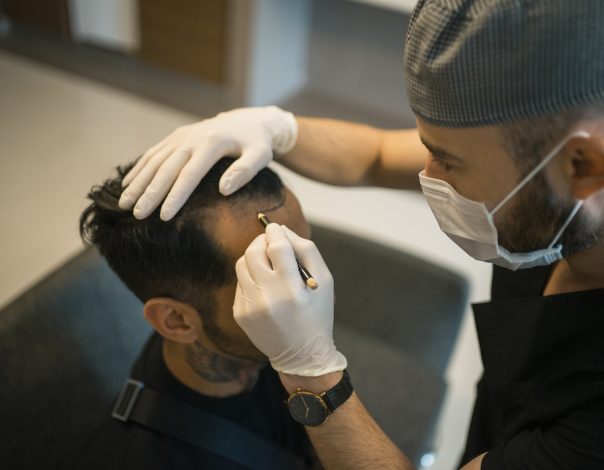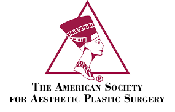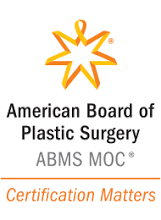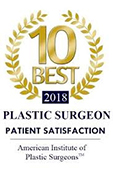Will Hair Loss From Steroid Use Grow Back?
Anabolic steroids are known for their ability to promote muscle growth and improve physical performance, but they also come with a range of side effects, including hair loss. For many individuals using steroids, hair thinning or balding can become a distressing concern.
Dr. Brian Vassar Heil, a board-certified plastic surgeon in Pittsburgh, is recognized as one of the top specialists for men, particularly in hair restoration. With nearly two decades of experience, he has built Premier Plastic Surgery into a leading practice for hair transplants and other procedures. In this blog, Dr. Heil explores how steroid use can lead to hair loss, whether it can be reversed, and the available treatment options.
Why Do Steroids Cause Hair Loss?
Steroids, particularly anabolic steroids, can accelerate hair loss due to their impact on hormone levels in the body. Here’s what you need to know:
- These substances increase levels of dihydrotestosterone (DHT), a potent hormone that is responsible for shrinking hair follicles in those predisposed to male or female pattern baldness
- While DHT is a natural byproduct of testosterone, anabolic steroids elevate DHT levels to an extreme, hastening the hair-thinning process
- This type of hair loss is prevalent among individuals who already have a genetic tendency toward hair thinning
While steroids can speed up this process, not everyone will experience hair loss. Genetics plays a crucial role in determining your susceptibility. If male or female pattern baldness runs in your family, you’re more likely to notice hair loss when taking steroids.
Can Hair Loss From Steroid Use Be Reversed?
- The answer to whether hair loss from steroid use will grow back depends on the individual case:
- For some, hair loss might be temporary and reversible once the steroid use is discontinued
- If the hair follicles have not been permanently damaged, there’s a good chance that hair may regrow after stopping steroids
- However, for others, especially those genetically predisposed to male or female pattern baldness, the hair loss may become permanent if left untreated
Early intervention is critical to increasing the likelihood of hair regrowth. Addressing hair loss as soon as it starts will provide better outcomes than waiting until the condition progresses.
How Long Does It Take for Hair to Grow Back After Stopping Steroids?
Once steroid use is discontinued, it can take a few months before any noticeable improvement in hair growth is observed. Hair follicles need time to recover and reenter the growth phase after the hormonal imbalance caused by steroids is corrected.
In general, you might see early signs of regrowth within three to six months, but full regrowth, if possible, can take up to a year or more.
Treatment options can help stimulate hair growth and restore thinning areas for those whose hair loss is more advanced or permanent.
Can You Prevent Hair Loss During Steroid Use?
If you’re considering or currently using anabolic steroids, there are steps you can take to minimize your risk of hair loss:
- Lowering the dosage of steroids or shortening the cycle can reduce the impact on your hair follicles
- Additionally, using DHT blockers like Finasteride during your steroid cycle can help reduce hair loss, although this should be done under the guidance of a physician
- Exploring alternative methods for muscle growth that don’t increase DHT levels is another way to protect your hair while achieving your fitness goals
Treatment Options for Hair Loss Caused by Steroids
The Center for Hair Restoration at Premier Plastic Surgery offers several effective treatments to help reverse hair loss from steroid use. Just a few include the following:
- Minoxidil: A common over-the-counter treatment, Minoxidil stimulates hair follicles and promotes new hair growth. It’s a popular first-line treatment for hair loss.
- Finasteride (Propecia): Finasteride works by inhibiting the production of DHT, helping to slow or even reverse hair thinning caused by high DHT levels. This prescription medication is most effective when started early.
- PRP Therapy (Platelet-Rich Plasma): PRP therapy involves injecting your own platelet-rich plasma into the scalp to encourage hair follicles to heal and regenerate. This treatment is a natural, non-invasive option that has shown excellent results for many patients.
- Hair Transplant Surgery: In cases where hair loss is permanent, hair transplantation may be the best solution. Our experienced surgeons can perform follicular unit extraction (FUE) or follicular unit transplantation (FUT) to restore your hairline and fill in thinning areas.
Hope for Hair Recovery is at The Hair Restoration Center
While hair loss caused by steroid use can be alarming, there is hope for recovery in many cases. Many individuals can restore their hair and prevent further loss with early intervention and the right care.
If you’re struggling with hair loss due to steroid use and want to explore your options for regrowth, The Center for Hair Restoration at Premier Plastic Surgery in Pennsylvania can help. Contact us today to schedule a consultation and learn more about our advanced hair restoration treatments tailored to your needs.
















